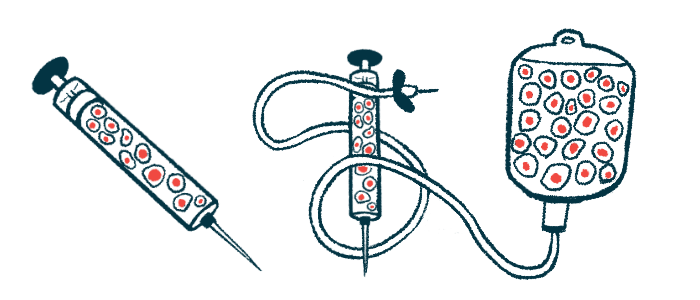Man Develops AAV Following Blood Stem Cell Transplant: Case Study
Written by |

A 65-year-old man developed granulomatosis with polyangiitis (GPA), a type of anti-neutrophilic cytoplasmic autoantibody (ANCA)-associated vasculitis (AAV), after receiving a stem cell transplant for another autoimmune condition, according to a case report.
“[Our] case report suggests that [AAV] may develop in the setting of stem cell transplantation and must be recognized promptly in the correct clinical setting since it has a high morbidity and mortality rate if left untreated,” the researchers wrote.
The study, “Cytoplasmic Antineutrophil Cytoplasmic Antibodies (C-ANCA) Vasculitis: An Uncommon Complication After Stem Cell Transplantation,” was published in Cureus.
GPA is marked by inflammation in the walls of medium-sized and small blood vessels, which is referred to as systemic necrotizing vasculitis. Inflammation can occur in several tissues and organs, but in the classical form of GPA, the lungs, kidneys, and upper respiratory tract (nose, trachea, and ears) are usually affected.
About 70% of patients develop respiratory tract symptoms, including ear infections, a runny nose, and shortness of breath. Patients sometimes develop pulmonary infiltrates — when fluid, pus, or other substances occupy the lung’s airspace — or nodules (abnormal growths) in the lungs.
Although cases have been reported in all age groups, GPA is more common in the elderly. Also, most patients develop self-reactive antibodies against proteinase 3 (PR3-ANCA).
Autoimmune disorders, including autoimmune thyroid disease, are reported to occur more frequently following a hematopoietic (blood) stem cell transplant (HSCT), which is used to treat different diseases.
A team of researchers in the U.S. reported the case of a man who developed GPA after receiving a stem cell transplant for myelodysplastic syndrome, a rare form of blood cancer.
Although he recovered well from the transplant, five months later he developed a productive cough, fever, and shortness of breath that lasted for two weeks before he finally sought medical assistance.
Doctors initially suspected he had contracted bacterial pneumonia. Test results showed he had leukocytosis, or a high white blood cell count and normocytic anemia — a low number of red blood cells, but of a normal size. He also had a fever and low blood oxygen levels.
A chest X-ray revealed pulmonary infiltrates and a CT scan showed several opacities, or white fuzzy regions, in the lungs.
The man was subsequently treated with oxygen therapy and broad-spectrum antibiotics (meropenem and vancomycin).
However, two days later, his health declined, and mechanical ventilation was required. Bronchoalveolar lavage (BAL) fluid, which can be collected after washing the lungs with a saline solution during a bronchoscopy, indicated diffuse alveolar hemorrhage, or bleeding into the alveolar spaces of the lungs. No bacteria, viruses, or fungi were detected in the BAL fluid. A bronchoscopy lets clinicians examine the interior of the lungs’ airways by inserting a thin, flexible tube through the mouth or nose, down the throat and into the lungs.
Additional blood tests came back positive for cytoplasmic (c-ANCA) antibodies, also known as PR3-ANCAs.
“The diagnosis of GPA was made based on the patient’s clinical history, positive serologic antibody test, and bilateral pulmonary opacities seen on CT,” the researchers wrote. “Infections are potential triggers for post-transplant vasculitis; however, no infection was documented in our case,” they wrote.
Accordingly, he was given methylprednisolone, a corticosteroid medicine to reduce inflammation, and after a few days, his condition improved.
Once the diagnosis of GPA was made, he began treatment with rituximab, an antibody-based therapy designed to lower antibody-producing immune B-cell levels.
He was ultimately discharged from the hospital on an oral steroid taper with indications to continue rituximab treatment.
“In our case, the patient was diagnosed with GPA, which is likely one of the autoimmune complications of HSCT, given the recent history of transplantation in the absence of other identifiable triggers,” the research team wrote.






